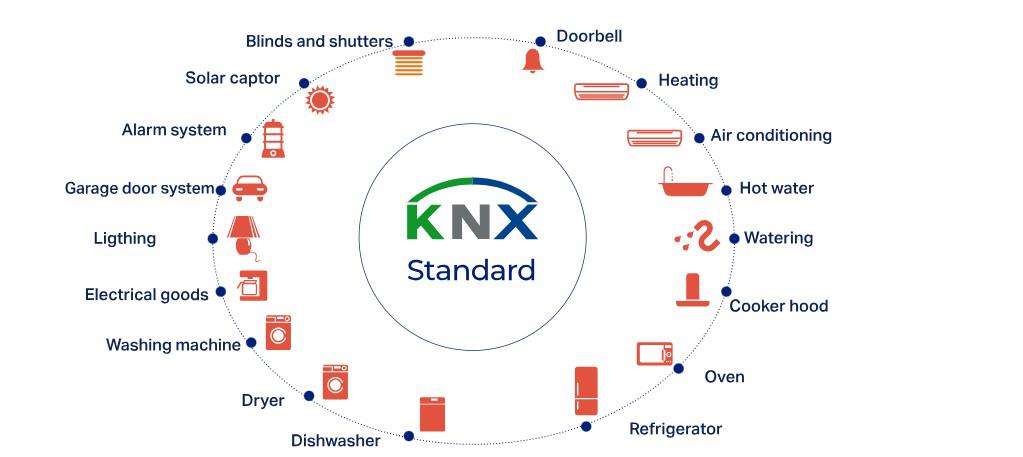Konnex
January 8, 2025 at 8:30 AM

Konnex, more commonly referred to as KNX, is a standardized communication protocol designed for building automation and home control systems. Here are the key aspects of Konnex in the context of communication:
Overview of KNX
- Origin: KNX originated from the European Installation Bus (EIB) in the early 1990s and has since evolved through the integration of other protocols such as BatiBus and EHS (European Home Systems Protocol) to form a unified standard for automation systems14.
- Functionality: It facilitates communication between various devices and systems within buildings, including lighting, heating, ventilation, security, and audiovisual equipment. This interoperability is crucial for creating smart environments in both residential and commercial settings4.
Communication Technologies
KNX supports multiple transmission media, allowing for flexible installation options:
- Twisted Pair: The most commonly used method, with an average bit rate of 9.6 kbit/s.
- Powerline Communication: Utilizes existing electrical wiring to transmit data, reducing installation costs and complexity.
- Radio Frequency: Operates at 868 MHz for wireless communication.
- IP/Ethernet: Enables integration with modern network infrastructures for remote access and control14.
Applications
KNX is widely used in:
- Home Automation: Control of lighting, HVAC systems, security alarms, and energy management.
- Commercial Building Management: Automation of complex systems in offices, hotels, and public buildings to enhance efficiency and user comfort34.
Advantages
- Open Protocol: KNX is an open standard managed by the KNX Association, ensuring that devices from different manufacturers can work together seamlessly without proprietary restrictions4.
- Scalability: It can be used in both new constructions and retrofitting existing buildings due to its versatile installation options.
In summary, Konnex (KNX) is a critical component in modern building automation, enabling efficient communication between diverse systems and devices to create intelligent environments.
Let's talk
We would love to hear from you!